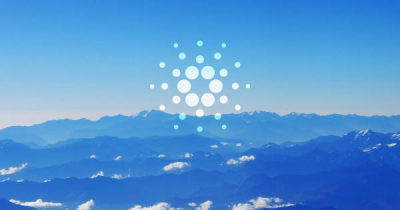The cryptocurrency environment has changed in the past years
In the beginning, Bitcoin miners were people that heard about the possibility to earn magic coins by running their computers overnight and mining them. It was often crypto-punk enthusiasts that started doing that. Later, other people joined the mining industry and wanted to earn digital coins. It was appealing to keep running a decentralized network that was created by an anonymous person(s) Satoshi Nakamoto in order to give the world independent money. Money that would not be controlled by a central authority. Instead of the central issuer that would control the money supply, the network was designed to gradually release new coins in a predefined curve. The price of bitcoins was zero in the very beginning. Bitcoin was launched in January 2009 and the first real-world transaction happened in 2010 when a bitcoin miner bought two pizzas from Papa John’s in Florida for 10,000 bitcoins. It was a barter trade. After some time, it was possible to price bitcoins in fiat currencies. In 2010 the first exchanges appeared and the price of bitcoins rallied from 0.008 USD per BTC to 0.08 USD per coin within 10 days. You probably know the current price.
Nobody could anticipate the future of Bitcoin at those times and it is probably true nowadays as well. You could ask what has Cardano in common with the history of Bitcoin. Both Cardano and Bitcoin are public and open networks. It means that everybody can join and participate in running it. The Bitcoin history is longer so we can have a look at it and learn from it. What is especially interesting for us is the development of mining over time. Satoshi has designed Bitcoin in a way that every holder could also be a miner. If you downloaded a full node then you could begin mining on your computer with a high probability that you mine a block and get a reward. It can be said that every holder of bitcoins could participate in running the network.
Not many people were interested in mining bitcoins at those times. As the number of people slowly rose the probability to be successful in mining a new block gradually decreased. The power of your CPU or the number of computers you had, started to play a higher role regarding success rate. As you probably know, you need computer power to be able to mine bitcoins. Mining bitcoins is a competition between all participants. The higher the hash rate you have the more often you succeed in getting a reward. Thus, people started to use more expensive CPUs, then more efficient GPUs, and later even better special hardware with ASIC chips (Application-Specific Integrated Circuit chip). New miners joined and found that it took more and more time to get a reward. Bitcoin reward is paid approximately every 10 minutes. It means that it can reward only 144 miners a day. It began to be more difficult to get a reward with a low hash rate. Miners with a low hash rate power needed to wait a long time and it was stressful.
The Bitcoin protocol does not care which miners will be rewarded. It is always the winner of the competition in a given circle and it can be the same miner 5x in a row. When there were thousands of miners it began to be really frustrating to wait for a reward for many days or even weeks. Bitcoin mining requires energy consumption so miners need the reward to cover the costs. It was a point when a mining pool was invented in 2010. Individual miners were able to join a mining pool and put together their hash rate powers trying to mine a block. Pools had a higher probability to mine at least one block a day. Miners were happy since they got rewards more often. The evolution continued and nowadays mining is a big business in which only professionals are able to be profitable in the long term. It is mostly unprofitable to mine at home with a single ASIC miner. There is no chance to mine a block without joining a pool. Businessmen had to move the mining into countries where the electricity was cheap. They built big mining halls that are filled in by thousands of ASIC miners.
The way how the Bitcoin network is kept running changed significantly over the last decade. Instead of the large number of small miners that we could see in the past, there are a few entities doing big business. Notice that the evolution of mining goes hand in hand with the success of Bitcoin from the adoption and market capitalization points of view. When the financial and social importance of a public network increases then the impact on the way how the network is kept running can be expected. Cryptocurrencies are generally a very new thing and we have no previous experiences. Nobody could anticipate how the mining environment changed and we can be sure that we will see further development and maybe breaking changes in the future. Regarding Cardano, we can expect a similar evolution. If the financial and social importance of the Cardano network increase then also staking might be impacted in an unpredictable way. Now, there are many Cardano enthusiasts that operate a staking pool. They must take into account that it can become a profitable business and many entities will want to be part of it. Professionalism might be required to stay competitive and keep the business running.
Where we are now
The whole cryptocurrency sector has changed. The ideas of the crypto punk community are still present but not so visible as some would wish. It is evident that blockchain technology can be the future in many industries and reshape mainly the financial world. Banks, companies, and other entities explore the sector, experiment with blockchain, and search for partners. Many investors have joined and they try to find new opportunities. The public open networks are here to stay and the question is how fast will be the mainstream adoption and how will it look like.
Cardano is a mission-oriented project. The goal is to become a social and financial operating system. It is here to provide financial identity to people that do not have it and need it the most. To succeed, it must be able to solve real issues. It is a very difficult and challenging task. It can take some time to reach the goal and people will doubt the success on the way. It is fine. It was the same as the mission of Bitcoin. Bitcoin was designed to become an electronic peer-to-peer cash system. The narrative changed over time from an electronic peer-to-peer cash system to a store of value. It is an evolution and it can change again in the future. It is important to know that the staking industry might start changing when it will be obvious that the Cardano mission is going to come to fruition. Be aware that it can take 5–10 years and the change can be slow and gradual similarly as we have seen that with Bitcoin mining. Cardano pool operators must be vigilant and accommodate when it will be needed. It is likely that the protocol’s setting will have to be tuned in order to keep the Cardano protocol decentralized and secure. These changes will probably directly affect pool operators and maybe delegators as well.
What will Cardano staking look like in the future?
Cardano has been designed for mass adoption from the beginning. Pools are part of the distribution of the consensus power. What will be probably changed in the future are the parameters that influence the level of decentralization and security. The protocol is able to economically support a certain number of pools. It means that, for example, the level of saturation can be decreased and a higher operator’s pledge will be required. The advantage is that instead of electricity, ADA coins are used as a scarce resource and it is a finite resource. There will never be more ADA coins minted than the 45,000,000,000. It means that a share of the consensual power will never change for holders. You can consider the share as the partial ownership of the Cardano network. When a staking operator owns, for example, 0,01% of ADA coins in the circulation then the share of the consensual power will remain similarly the same. Let’s assume that the ownership of 0,01% of coins in circulation will be a sufficient amount to create a pool in the future. For example, it will be the required size of the pledge. The share will never change and it will be always possible to create a pool since the number of pools will be increasing rather than decreasing. Is there a certainty that you will be always able to create a pool with that amount? No, it is just probable. It can happen that for security reasons it will be needed to possess 0,02% to have a sufficient amount of coins for the pledge.
The good news is that delegators will always be part of the staking. In the Bitcoin case, small miners had to leave the mining business just because they could not buy cheap electricity and they did not want to go into a risky business and buy expensive ASIC miners. In the Cardano case, everyone can participate in staking and thus making the network decentralize and secure. It is possible to delegate a single ADA coin to a pool. Cardano staking is a more inclusive business than Bitcoin mining. Delegators do not need to invest in expensive hardware prior to participating in the staking. Every 5 days, the Cardano protocol rewards pools that have produced at least one block in an epoch. Pool operators and also delegators know in advance when to expect the reward. When businessmen will try to take over the staking business they cannot do it easily by buying an external resource and pushing out small players. They will need to buy ADA coins. If pool operators and delegators hold their coins they will always have the same stake and the right to get a reward. It is hard to predict whether there will be a high number of small delegators or whales. Most probably we can expect a combination of both. From the staking pool operator’s point of view, they can be sure that they will be able to keep their business running if they keep a sufficient number of coins for the pledges. Whales have no chance to push small operators out via their big stakes.
A stake of a pool consists of the operator’s pledge and from the many stakes that many stakeholders have delegated to the pool. Operators should not forget that they need to attract delegators to their pools since the bigger a pool is the higher reward they receive. Bigger players are more experienced in marketing and they will try to attract delegators to their pools. They can even operate private pools. It means that they can completely saturate their pools and they do not need to attract delegators. Small operators can take it as an advantage and point that out. They can explain to delegators that the network will be more decentralized with a higher number of independent pools.
It will never happen that there will be 1000 saturated pools and each of them will be owned by an independent entity. The project market capitalization is high for small investors but relatively small for whales. It can simply happen that one entity can have tens of pools. It does not look well but also whales participate in staking for profit. They have skin in the game and having a big stake does not necessarily mean that they will plan to commit an attack. Some people even appreciate that there are big players since it gives the project legitimacy and it is a kind of balance to many small operators. We personally would like to see rather many small and middle-sized operators than a few whales that would have together over 50% stake. It is extremely difficult to create a decentralized network in an environment where the power can be bought for money. Cardano stake-holders will have the voting rights and they can propose a change of some parameters to tune the decentralization. It cannot fully solve the problem but it provides the possibility to respond to some unexpected events in the future.
Cardano is a smart contract platform. The number of newly issued tokens and decentralized applications will grow. With that, traffic will be higher and operators will probably need to upgrade their hardware. From the business perspective, operators should take it into account and build a budget for that.
Price volatility is a factor that makes the business a bit uncertain. In the crypto world, the price can go 10x up and then 10x down. Pool operators need to cover the cost so they should be aware of the volatility. It can be useful to understand the market cycles and know when to sell ADA coins. Operators definitely do not need to be traders but they should consider the upside potential of the project. It can be difficult to set pool fees. An operator can either do it with regard to the current price and decrease the fee in the future or set a low fee now expecting the increase of ADA coin price in the next bull market. Delegators like lower fees but operators like to be profitable also in a bear market.
Conclusion
If you are a staking pool operator then you are already at the beginning of the nascent and interesting staking industry. It is definitely a difficult role since a variety of expertise is necessary. Apart from IT skills, you also need to know something about marketing, advertisement, business, accounting, and maybe economic and trading. It can seem a lot for one person but it is still feasible to succeed as an individual. The whole crypto space might look different in the next 10 years and it is hard to predict what will be necessary for operating a Cardano pool. One thing is certain, though, ADA is a scarce resource and consensual power is based on coins. If you have them, you can either operate a pool or delegate them. All stake-holders own the network and will be responsible for the future of the project. Nobody else.

 How to start with Cardano staking for newbies
How to start with Cardano staking for newbies Cardano Shelley: Claiming ITN reward
Cardano Shelley: Claiming ITN reward Cardano smart contracts will enhance the abilities of decentralization
Cardano smart contracts will enhance the abilities of decentralization What Cardano can change through decentralization
What Cardano can change through decentralization